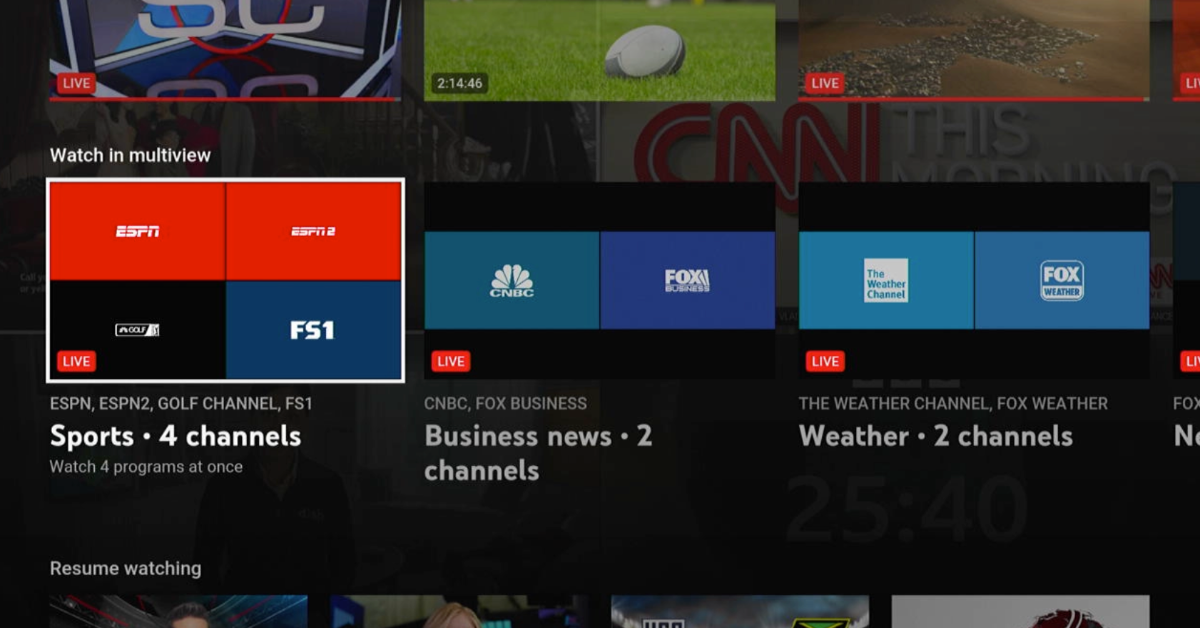
Google’s streaming cable television alternative YouTube TV is on track to overtake Comcast’s Xfinity TV and Charter’s Spectrum TV to become the biggest pay TV platform in the United States, according to a media analyst.
Last week, a forecast from research firm MoffettNathanson projected YouTube TV’s growth will accelerate to around 12.4 million paying subscribers by the end of 2026, while Comcast and Charter are expected to continue shedding pay TV customers over the next 24 months.
If that forecast proves to be accurate, YouTube TV would become the biggest pay television provider in the United States, analyst Michael Nathanson wrote in the report.
It is difficult to know how many of those subscribers will pay full price for YouTube TV, which currently costs $73 per month for access to around 80 live channels but is likely to be more expensive in the years ahead as broadcasters demand more money for their programming.
Precise numbers are hard to pin down, because Google and YouTube do not regularly report how many subscribers YouTube TV has. When they do, the companies don’t differentiate between paying customers and those on promotional rates or extended free trials. Around one in six YouTube TV customers are taking advantage of discount pricing through referral links, extended promotions through a broadband provider or are on a short- or long-term free trial, according to some estimates.
Even at full price, YouTube TV winds up being cheaper than cable and satellite: The platform doesn’t charge cable-like broadcast or regional sports fees — but it also doesn’t offer flexible programming packages like those found on traditional pay TV platforms.
Instead, YouTube TV offers an all-in-one approach to pay TV, distributing channels like ESPN, Fox Sports 1, CNN, TBS, TNT, Comedy Central, the Discovery Channel, Cartoon Network and AMC as part of a base package that includes all programming fees (though taxes, where applicable, are extra). Sports league packages like NFL Sunday Ticket and NBA League Pass are available for separate fees, as are premium networks like Max, Paramount Plus with Showtime and Starz, but they aren’t required.
YouTube TV has not been profitable since it launched several years ago, with Google supporting YouTube TV as part of the broader YouTube business. But Nathanson predicts YouTube TV will turn a corner by 2026, achieving full profitability with a short-term margin of 6 percent, slightly lower than the overall virtual pay TV industry margin forecast of 10 to 15 percent.
Helping to drive YouTube TV’s growth is a sudden shift by some telecoms away from cable TV service in favor of higher-broadband service offerings. Last year, several regional cable operators announced they were dropping their traditional cable TV service in favor of directing customers toward streaming solutions for their live entertainment, news and sports — and a few ultimately picked YouTube TV as their preferred video programming replacement.
Jason Cohen, the CEO of streaming video marketplace MyBundle, predicts “hundreds” of cable operators will make that same shift over the next few years.
“And, that’s, I think, me being a little conservative — I think it will probably happen faster than that,” Cohen said in an interview with this reporter last December.